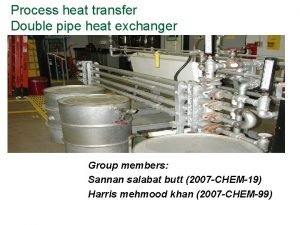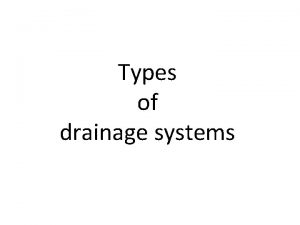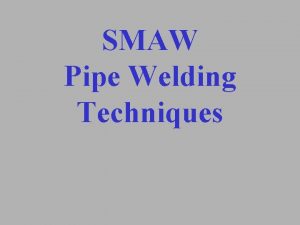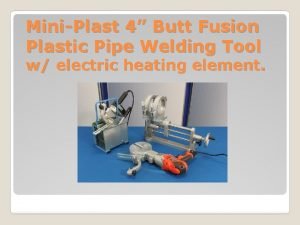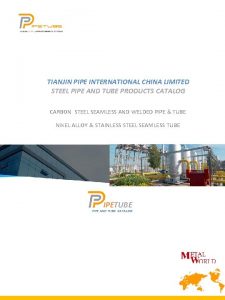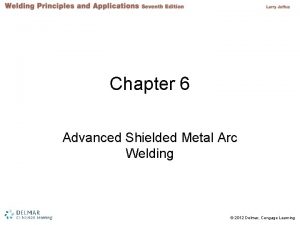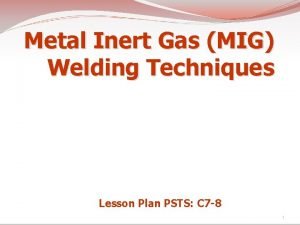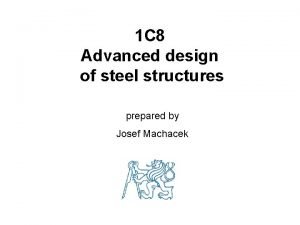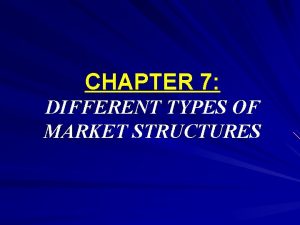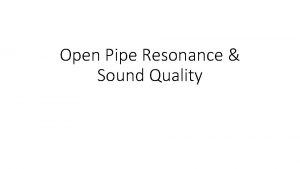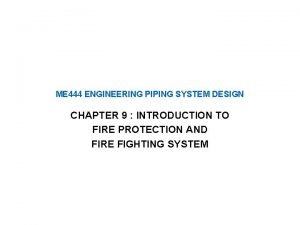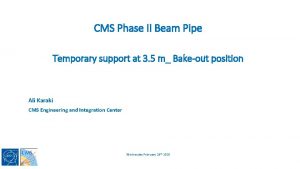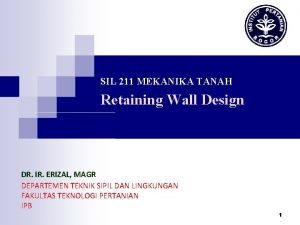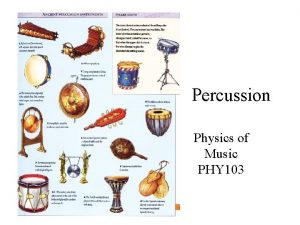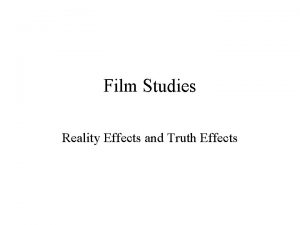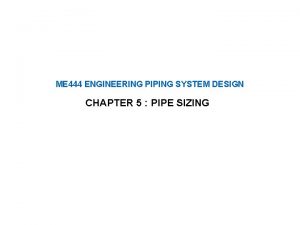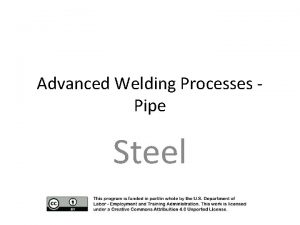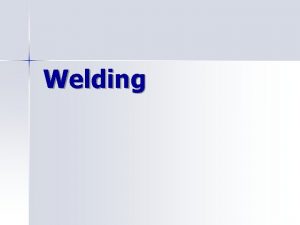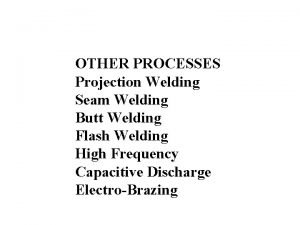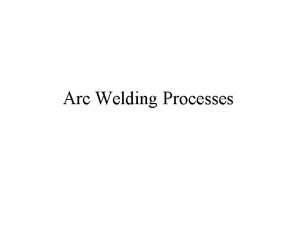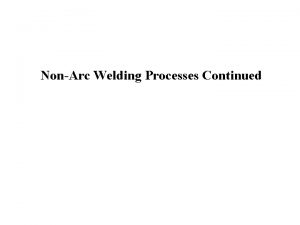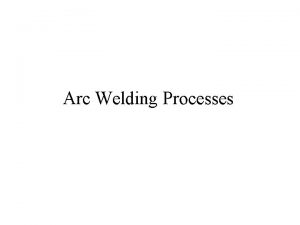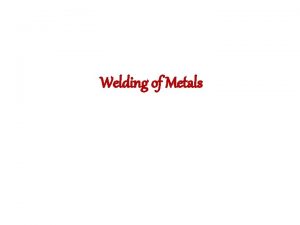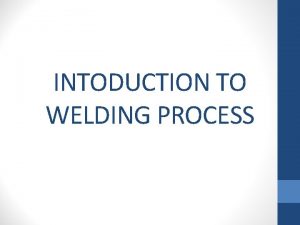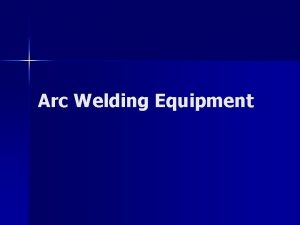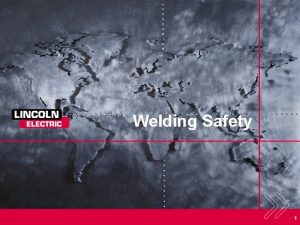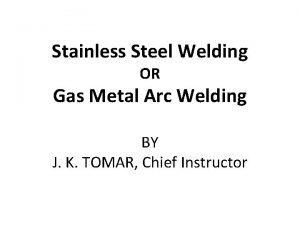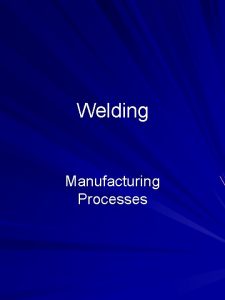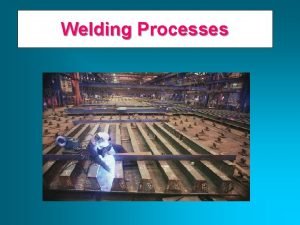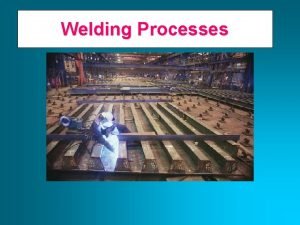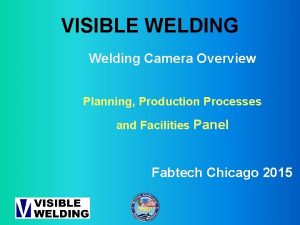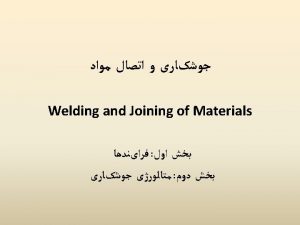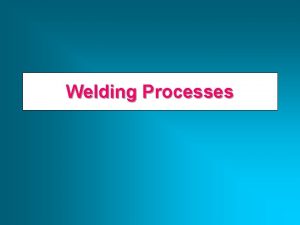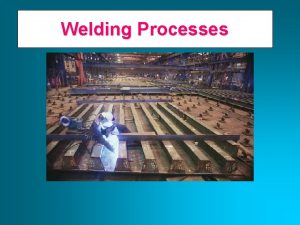Advanced Welding Processes Pipe Steel Steel What are




























- Slides: 28

Advanced Welding Processes Pipe Steel

Steel • What are the primary elements that make up the material we call “steel”?


Steel • What are the primary elements that make up the material we call “steel”? – Iron (Fe) – Carbon (C)


Types of Steel • Carbon • Alloy • Tool • Stainless

Carbon Steels • Carbon (Up to 1. 7%) – Low (Up to 0. 15%) – Mild (0. 15% to 0. 35) – Medium (0. 35% to 0. 60%) – High (0. 60% to 1. 7%) • Greater than 2. 0% Carbon = Cast Iron

Carbon Steel Applications & Characteristics • Low and Mild Carbon Steel (0. 15 to 0. 35%) – Good ductility – Good weldabilty – Hardening can only occur on the surface – Tensile strength 45, 000 to 75, 000 psi • Medium Carbon Steel (0. 35 to 0. 60%) – Some ductility – Weldable with proper precautions – Higher Tensile Strengths 75, 000 to 150, 000 psi – Used mainly for machine parts

Carbon Steel Applications & Characteristics • High Carbon Steel (0. 60 to 1. 7%) – Not considered weldable – High Tensile Strengths up to 200, 000 psi – Used mostly for tools and high wear applications

Alloy Steels • Alloy Steel – Where another element(s) are added to plain carbon steel to alter its characteristics and properties. – High Strength Low Alloy (HSLA) • Less than 0. 25% Carbon • Less than 5% alloys other than carbon & iron – High Alloy Steels • Greater than 10% Chromium, Nickel or Manganese

Carbon and Alloy Steel Designations • AISI & SAE classification system

AISI / SAE Classification System • ex. 1018 – 1 st digit is the type of steel • 1 = Plain Carbon Steel – 2 nd digit is the amount of major alloy • 0 = Percent of major alloying element present – 3 rd & 4 th digits indicate the percent carbon in 10 ths of a percent • 18 = 0. 18% carbon content

Tool Steels • Special Application Carbon & Alloy Steels

Stainless Steels • What element(s) when added to plain carbon steel make it “stainless steel”? • What is meant by the term “stainless”?

Stainless Steels • What element(s) when added to carbon steel make it “stainless steel”? – Chromium ( 11%) • What is meant by the term “stainless”? – Resistance to atmospheric corrosion

Stainless Steel Types • • Austenitic Ferritic Martensitic Duplex

Stainless Steel Designations (AISI) • 200 series – Austenitic – Cr Ni Mg • 300 series – Austenitic – Cr Ni • 400 series – Ferritic - Cr – Martensitic - Cr • 500 series – Martensitic – Cr Mo

Stainless Steel Characteristics • • • Corrosion resistant Ductile at low temperatures Lower melting temp. than carbon steel Lower coefficient of thermal conductivity Higher coefficient of thermal expansion Higher electrical resistance Sensitive to heat input Sensitive to oxidation Has Chromium Oxide film

Problems from Welding Stainless • Reduced corrosion resistance or premature corrosion – High heat input – Oxidation, loss of purge – Improper filler metal selection • Cracking – Stress Corrosion Cracking – High thermal expansion with high restraint

Heat Treating Terminology • Critical or Transformation Temperature – A temperature at which a phase change can occur. – In carbon steels ranges from 1330°F to 1600°F • Hardening – Heating an iron based alloy to within or above it’s critical temperature and then fast cooling by quenching.

Heat Treating Terminology Cont. • Tempering – Tempering is the process of re-heating a hardened material to below it’s transformation temperature to increase a materials strength, ductility and toughness. – Temperature ranges from 425°F to 620°F. – Used most commonly in heat treating tools.

Heat Treating Terminology Cont. • Annealing – Heating a material above it’s transformation temperature and slow cooling it to produce the softest or most ductile structure possible for a particular material type.

Heat Treating Terminology Cont. • Normalizing – Heating a material to above it’s transformation and cooling it in still air. – Produces a material not as soft as Annealing.

Heat Treating Terminology Cont. • Stress Relief – A material is heated to just below the transformation temperature and is slow cooled. – This is typically done to weldments. • Less distortion than annealing. • Reduces the hardness & internal stress caused by cooling.

Temperature vs. Time

Main Factors Affecting Heat Treatment • • Heating Temperature Time at Temperature Rate of Cooling Chemical composition, especially Carbon

Estimating Temperatures by Color (Steel) • Heating Temperatures – Dark Red to White – 900°F to 2500°F • Tempering or Oxide Temperatures – Light Straw to Steel Gray – 425°F to 620°F

 Antigentest åre
Antigentest åre Double pipe heat exchanger design calculation
Double pipe heat exchanger design calculation 2 pipe system drainage
2 pipe system drainage Pipe welding techniques
Pipe welding techniques Plastic pipe welding tool
Plastic pipe welding tool Concurrent processes are processes that
Concurrent processes are processes that China low temp carbon steel pipe
China low temp carbon steel pipe Corrugated steel pipe institute
Corrugated steel pipe institute Chapter 6 shielded metal arc welding
Chapter 6 shielded metal arc welding Pipe to plate weld symbol
Pipe to plate weld symbol Welding lesson plans
Welding lesson plans Advanced design of steel structures notes
Advanced design of steel structures notes Monopolistic competition examples
Monopolistic competition examples Closed-pipe resonator
Closed-pipe resonator How to read blueprints
How to read blueprints Fire sprinkler head gpm chart
Fire sprinkler head gpm chart Temporary pipe supports
Temporary pipe supports Pipe petri net
Pipe petri net Vertical
Vertical Physics of percussion instruments
Physics of percussion instruments Autotorque hydraulic chain pipe wrench
Autotorque hydraulic chain pipe wrench Double pipe
Double pipe Fiberglass tank and pipe institute
Fiberglass tank and pipe institute Three pipe system
Three pipe system Not a pipe
Not a pipe Double pipe
Double pipe Todd arbogast
Todd arbogast Piping system design
Piping system design Eriksson culvert
Eriksson culvert

